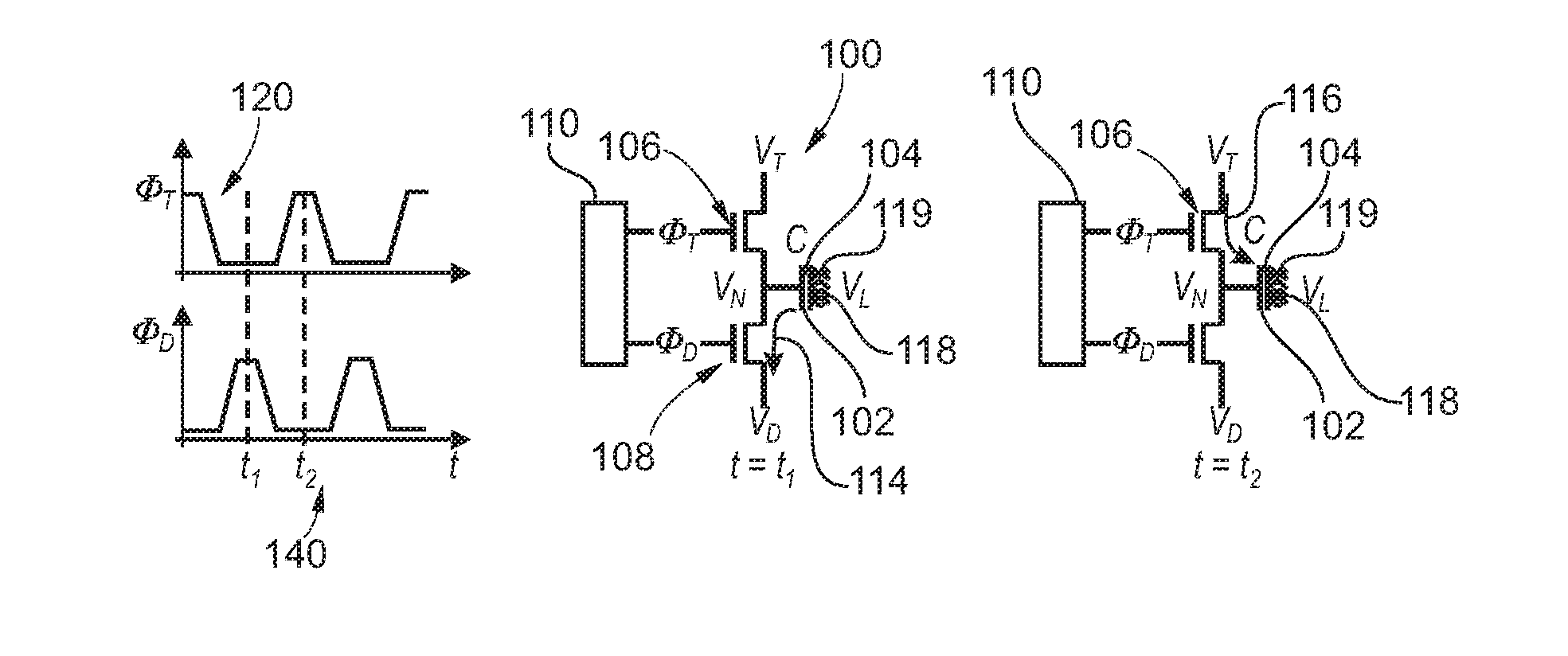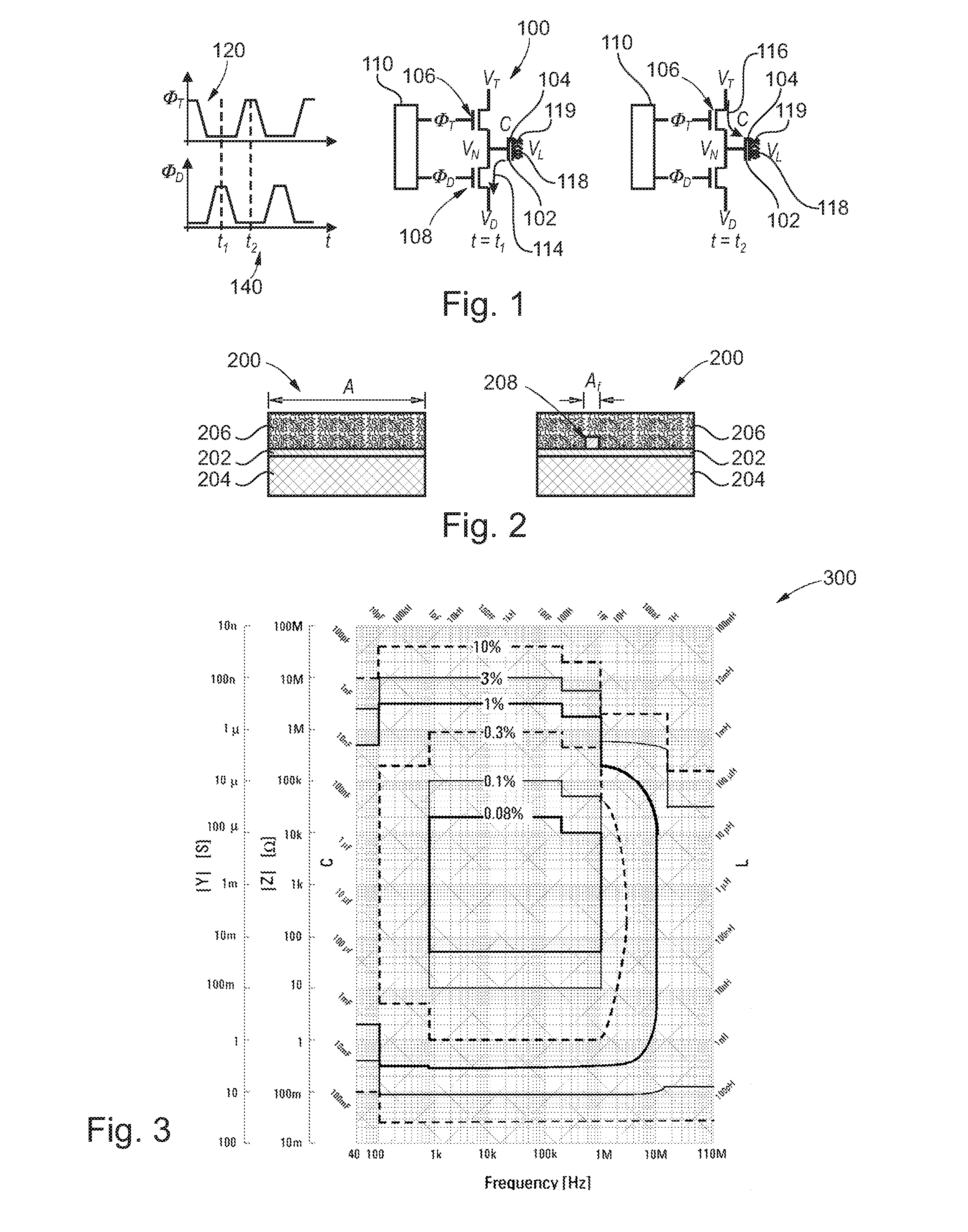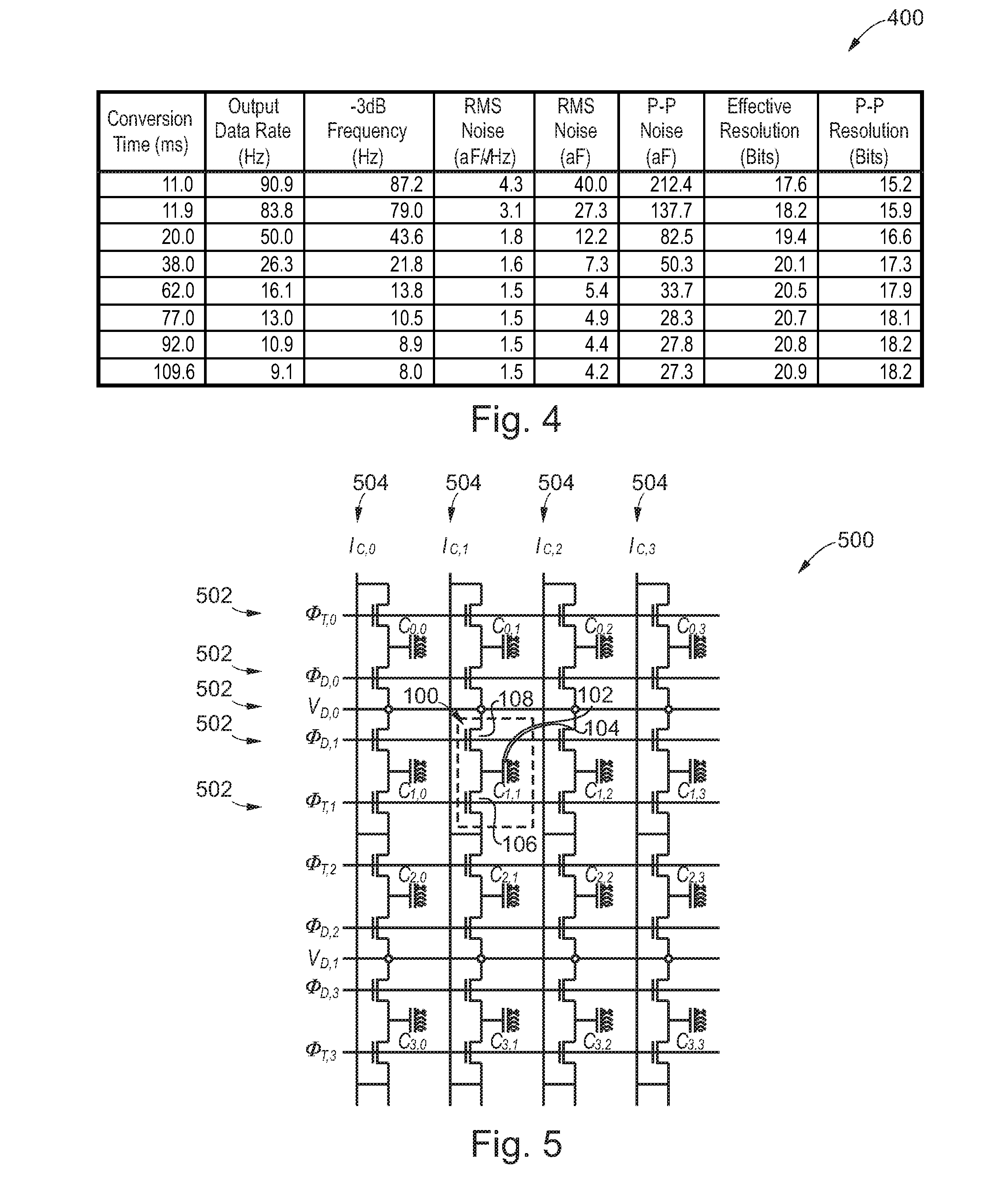Sensor, a sensor array, and a method of operating a sensor
a sensor array and sensor technology, applied in the field of sensors, can solve the problems of affecting the accuracy of the signal to noise ratio of the conventional sensor chip, and achieve the effects of improving the accuracy of the calibration parameters, suppressing the time drift effect, and improving the signal accuracy
- Summary
- Abstract
- Description
- Claims
- Application Information
AI Technical Summary
Benefits of technology
Problems solved by technology
Method used
Image
Examples
Embodiment Construction
[0081]The illustration in the drawing is schematic. In different drawings, similar or identical elements are provided with the same reference signs.
[0082]In the following, referring to FIG. 1, a biosensor 100 according to an exemplary embodiment of the invention will be explained.
[0083]The biosensor 100 is adapted for detecting biological particles (not shown in FIG. 1). The biosensor 100 comprises an electrode 102 as a first capacitor plate of a capacitor denoted with C in FIG. 1. A second capacitor plate is formed by an electrolyte electrode 118 (for instance in a manner similar to FIG. 2). An electrolyte 119 is connected by a separate further electrode (not shown) to connect it to an electrical potential VL.
[0084]A sensor active region 104 covers the electrode 102 and is sensitive for the biological particles.
[0085]A first field effect switch transistor 106 is provided which is operable to bring the electrode 102 to a first electric potential VT when the first switch element 106 ...
PUM
| Property | Measurement | Unit |
|---|---|---|
| Electrical resistance | aaaaa | aaaaa |
| Ratio | aaaaa | aaaaa |
| Electric potential / voltage | aaaaa | aaaaa |
Abstract
Description
Claims
Application Information
 Login to View More
Login to View More - R&D
- Intellectual Property
- Life Sciences
- Materials
- Tech Scout
- Unparalleled Data Quality
- Higher Quality Content
- 60% Fewer Hallucinations
Browse by: Latest US Patents, China's latest patents, Technical Efficacy Thesaurus, Application Domain, Technology Topic, Popular Technical Reports.
© 2025 PatSnap. All rights reserved.Legal|Privacy policy|Modern Slavery Act Transparency Statement|Sitemap|About US| Contact US: help@patsnap.com



